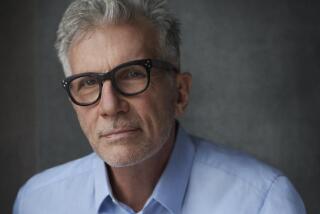Papa at 100
- Share via
The title of the latest published work of Ernest Hemingway has an authentic Hemingway ring: “True at First Light.” It comes from the passage, “In Africa, a thing is true at first light and a lie by noon. . . . “ The author would know.
This is a posthumously edited story, or memoir, or collection of ramblings from Hemingway’s prolonged African safari in 1953 and 1954. After two air crashes in which he suffered severe injuries, Hemingway and his wife, Mary, returned to their Cuban estate, a finca near Havana. There he penned 856 pages about the African trip. But he quit the project without distilling it into publishable form and went on to other works such as “A Moveable Feast” and “The Garden of Eden.”
Now, the African material has emerged in print, edited to 300 pages by Hemingway’s son, Patrick, and published by Scribner’s for the 100th anniversary of Hemingway’s birth next Wednesday. It is part of a flurry of fresh Hemingway material at the bookstores this month. Included are multiple reprints of Hemingway novels, the excellent fifth and final volume of the biography by Michael Reynolds and even a novel on Hemingway’s formative writing years in Paris in the 1920s.
The centennial might be more of a commercial or historical event than a literary celebration, although critics and academics continue to debate the depth and meaning of the American icon’s writing. To a modern audience, much of Hemingway might seem crudely archaic, especially “the sloshing male sentimentality” that reviewer James Wood found in “True at First Light.” Wood said in the New York Times Book Review, “The famous style occasionally flares into fineness but is really no more than a pretender to its former royalty.”
Much of the book is tedious and some is plain silly. But here and there the old magic rises, especially in descriptions of scenes that could be described no other way. For example: “White flowers had blossomed in the night so that with the first daylight before the sun had risen all the meadows looked as though a full moon was shining on new snow through a mist.”
The descriptions will delight those who fed on Hemingway in college, savoring a trout stream in Spain, the whisper of skis in the Austrian Alps above Schruns and an explosion of pheasant rising into the Idaho sky. The male rituals of alcohol, sex and war are out of sync with today’s experience, but they represent a time and age in America.
Death haunted Hemingway as it does everyone who savors life and grows old, and he often brooded about his father’s suicide. In “True at First Light,” G.C., his camp companion, says, “You don’t ever have despair, do you, Ernie?” Not yet, Papa responds, “I’ve seen it close enough to touch it but I always turned it down.” At Sun Valley, Idaho, on July 2, 1961, Hemingway yielded to his despair and turned his favorite shotgun on himself. His remarkable legacy, the myth and fact, remains very much alive 38 years later.
More to Read
Sign up for our Book Club newsletter
Get the latest news, events and more from the Los Angeles Times Book Club, and help us get L.A. reading and talking.
You may occasionally receive promotional content from the Los Angeles Times.






